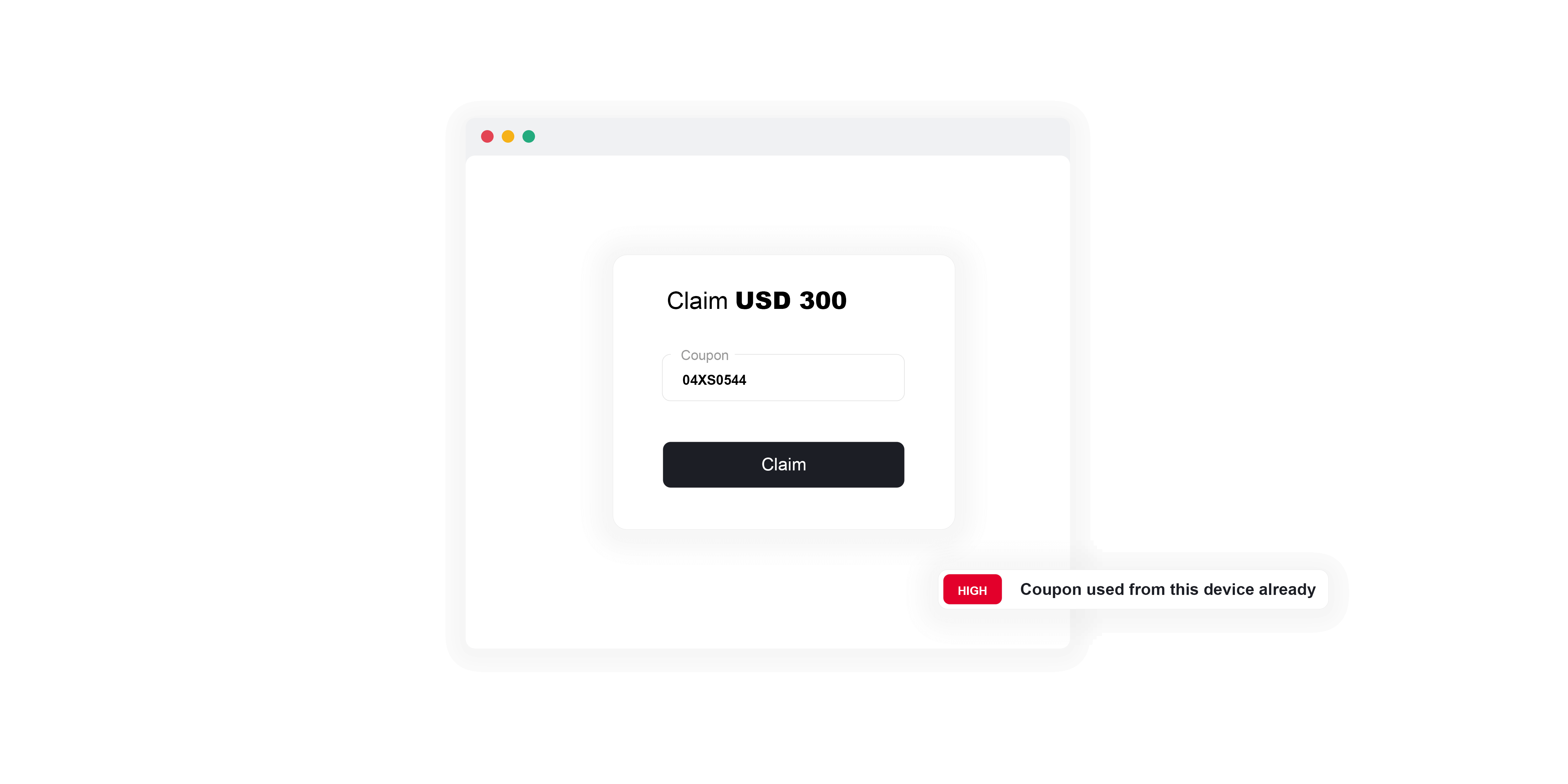
From Bonus Abuse to Bot Attacks: Inside the New Wave of Gaming Fraud
Gaming fraud is on the rise, with nearly 83% of operators reporting an increase in the past year. Learn how leading gaming firms are countering coordinated schemes while keeping customers onside.
Gaming and betting aren’t just popular—they’re booming. The global online gambling market is projected to nearly double to about $154 billion by 2030, growing at a CAGR of almost 12%. That’s great news for operators, but growth attracts attention from more than just new players.
Alongside legitimate traffic, fraud is ramping up. The attacks take various forms, including account takeover, account sharing, bot attacks, new account fraud, and promotional fraud. Promotional fraud is one of the fastest-growing categories because it often involves low risk, quick payouts, and can be scaled through automation or coordinated account networks.
The threat isn’t limited to gaming; mainstream platforms are also vulnerable. In a widely reported incident, PayPal shut down 4.5 million accounts after discovering bad actors had been exploiting its promotional campaigns.
In this article, we look at why gaming fraud (and bonus abuse in particular) persists, how ThreatMark’s behavioral intelligence detects and disrupts it, and what happened when a major Central European gaming operator applied it to real-world threats.
When Gaming Becomes Fraudsters’ Playground
As the gaming industry booms, so does the fraud that shadows it. Between 2022 and 2023, mobile casinos and betting platforms lost $1.2 billion to fraud. Across the sector, iGaming fraud surged an average 64% year-over-year between 2022 and 2024, and roughly 83% of operators say it’s getting worse. In some markets, more than 8% of new applicants are fraudsters, underscoring just how aggressively organized rings are targeting operators.
Bonus abuse has become one of the most widespread (and costly) forms of fraud in the industry. It exploits welcome offers, referral bonuses, and other incentives, often overlapping with tactics like new account fraud, account takeover, and money muling. These schemes feed into each other, amplifying financial losses and operational strain, while draining revenue, distorting acquisition metrics, and eroding trust with genuine players.
For legitimate users, the fallout can mean delayed withdrawals, more verification hurdles, and even wrongful account flags. For operators, the stakes are higher: stricter regulations mean that fraud incidents exposing gaps in compliance can result in millions in fines and, in some cases, license revocations. Minimal defenses are no longer a low-risk choice. Inaction today risks severe financial and reputational damage tomorrow.
Common Tactics Used By Bonus Abusers
Fraudsters rarely rely on a single trick. In bonus abuse, they often combine multiple tactics to avoid detection and stretch every promotion to its limit. Some methods are simple, like opening extra accounts, while others use sophisticated tools and coordinated networks. Understanding these tactics is the first step to spotting them early and shutting them down.
- Creating Multiple Accounts (Multi-Accounting or Gnoming)
Opening several accounts under different identities to repeatedly claim “new player” bonuses. - Using Stolen Credit Cards
Funding accounts with stolen payment details to trigger deposit bonuses, then cashing out before chargebacks occur. - Bonus Hunting
Targeting promotions with favorable terms and cycling through wagering requirements in the safest way possible (e.g., low-volatility slots or matched bets) to extract maximum profit with minimal risk. - Employing Antidetect Browsers
Using specialized browsers or device-fingerprint spoofers to mask digital identity, making multiple accounts appear to come from different devices and avoid detection by fingerprint-matching systems. - Automated Bot Attacks
Some organized fraud rings deploy automation to quickly register accounts, claim bonuses, or place large volumes of small, low-risk bets—often at a speed and scale impossible for a human player. - Matched Betting (Arbitrage)
Betting on all possible outcomes of a sports event (sometimes across different operators) to lock in a guaranteed profit from free bets or bonuses. - Chip Dumping
In poker or other peer-to-peer games, two or more accounts deliberately lose to each other so bonus-eligible chips or winnings end up in a single “target” account. - VPNs, Device Spoofing, and Geolocation Bypass
Using VPNs, proxies, or residential IP rental services to appear in eligible jurisdictions where bonuses are more generous or available to “new” customers.
Stopping Bonus Abuse Without Stopping Genuine Players
Knowing how fraudsters operate is only half the battle. The real challenge is stopping them without creating roadblocks for genuine players. Traditional fraud rules (like flagging any account with a shared IP) can catch some abuse, but they often generate too many false positives and frustrate loyal customers. In a competitive industry where user experience drives retention, that’s not a risk operators can afford.
That’s where ThreatMark’s Behavioral Intelligence Platform comes in. By unifying behavioral, device, and transactional insights into one view, it detects fraud patterns that static checks miss:
- A surge of new accounts from the same device or IP address
- Accounts with identical or near-identical behavioral profiles
- Immediate bonus use with no signs of regular gameplay or betting
- Signs of account takeover (ATO) where fraudsters exploit compromised accounts to drain bonuses and rewards
This approach separates genuine players from coordinated fraud rings, allowing operators to tighten controls without punishing legitimate customers. By spotting suspicious behavior in real time, ThreatMark enables action before bonuses are cashed out, keeping promotions profitable and reputations intact.

How Tipsport Cut Fraud Detection Time by 98%
When leading Central European operator Tipsport faced a rise in bonus abuse and other high-impact fraud types, it needed more than basic rule-based checks. Fraudsters were using multi-accounting, antidetect tools, and automated bot attacks to exploit bonuses and scale profits through automated wagering, burdening investigation teams in the process. Stopping them without hurting legitimate players was the challenge.
By deploying ThreatMark’s Behavioral Intelligence Platform across its digital ecosystem, Tipsport gained a unified view of player activity—linking behavioral patterns, device signals, and transaction context in real time. This allowed the fraud team to:
- Reduce investigation time for complex fraud cases by 90%, from around five hours to just 30 minutes
- Cut mean time to detect by 98%, from 16 hours to just 20 minutes
- Lower false positives from 30% to 5%, reducing friction for genuine players
- Save nearly 1,000 man-hours per year
With a strong return on investment, ThreatMark’s solution turned fraud prevention into a measurable competitive advantage, enabling Tipsport to stay ahead of evolving threats while maintaining existing internal processes.
Read the customer story
The High Cost of Ignoring Gaming Fraud
Fraud in the gaming industry eats into profitability, distorts key performance metrics, and erodes player trust. Left unchecked, it inflates acquisition costs, drives up operational workload, and can push loyal customers away through the extra friction that blanket fraud controls create.
Tipsport’s results show that a precise, behavioral approach can turn the tide. By spotting coordinated abuse early and accurately distinguishing genuine players from fraud rings, operators can safeguard promotional ROI, protect their reputation, and stay on the right side of regulatory expectations—without sacrificing the player experience that keeps customers coming back.
Next Steps: Protecting Your Promotions and Players
Bonus abuse and other sophisticated tactics have become part of the fraud landscape in gaming and betting—persistent, adaptable, and costly. As promotions grow more generous and onboarding becomes more streamlined, the opportunities for exploitation only widen. Operators that treat it as an occasional nuisance risk seeing it quietly erode both margins and player trust.
Recent results from the field show that a data-driven, behavioral approach can change the equation. The full Tipsport case study offers a detailed look at how one operator confronted the problem, what worked in practice, and what others in the sector can take from that experience. To explore the approach in more depth, book a demo and see behavioral intelligence in action in your own environment.



